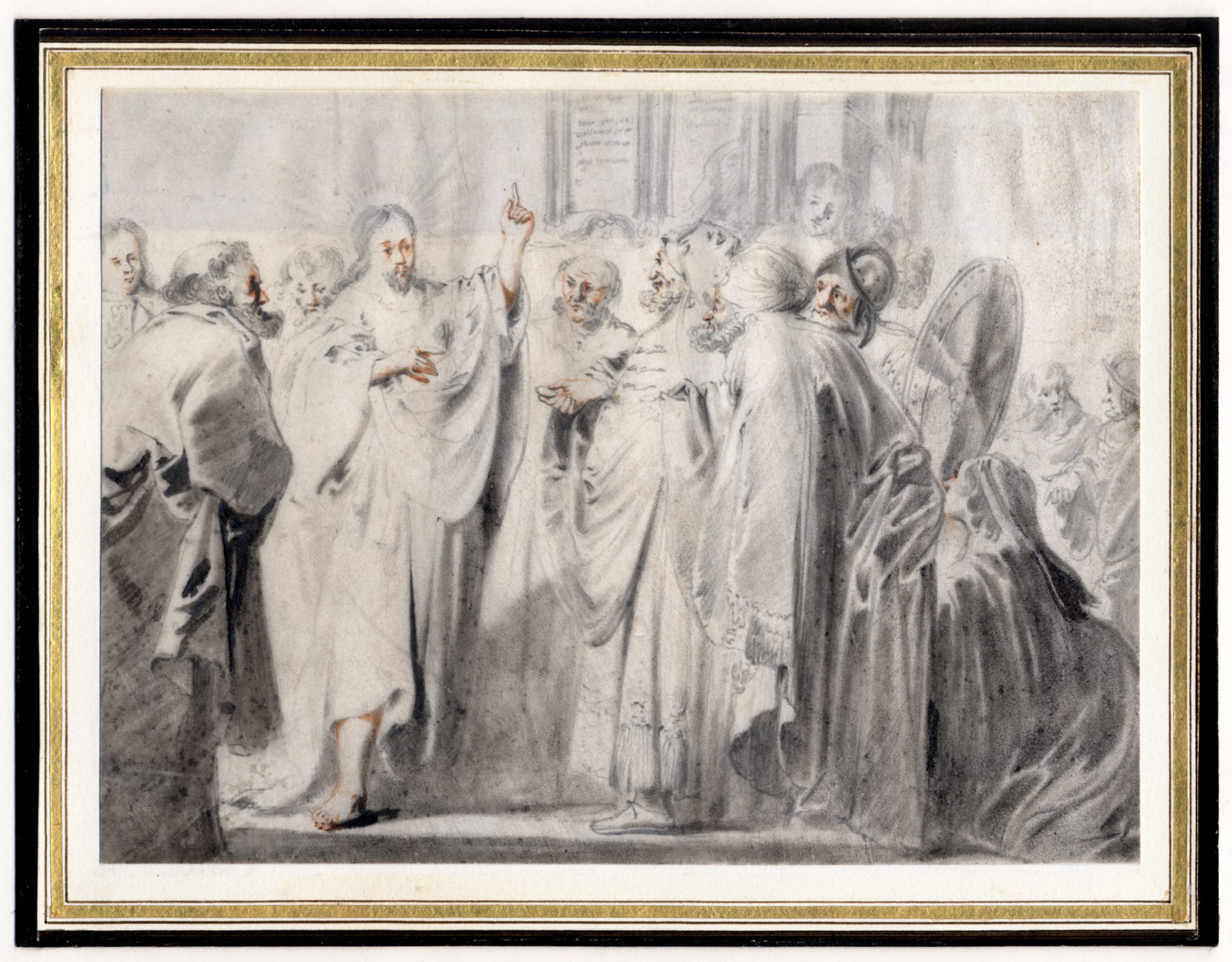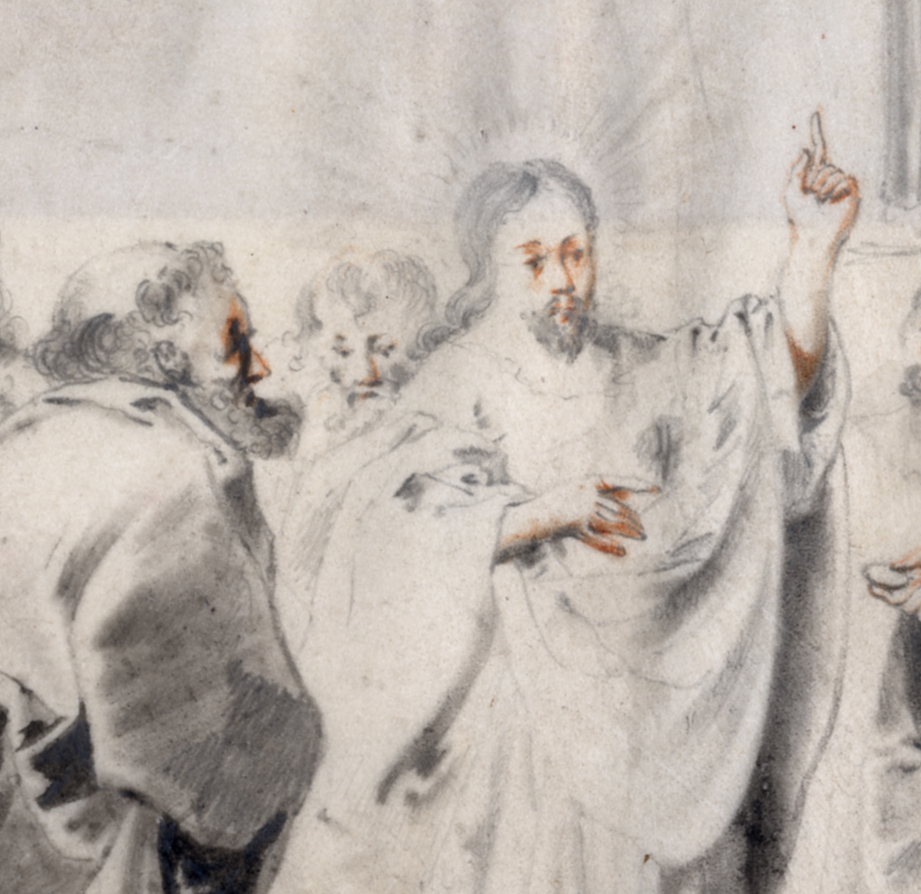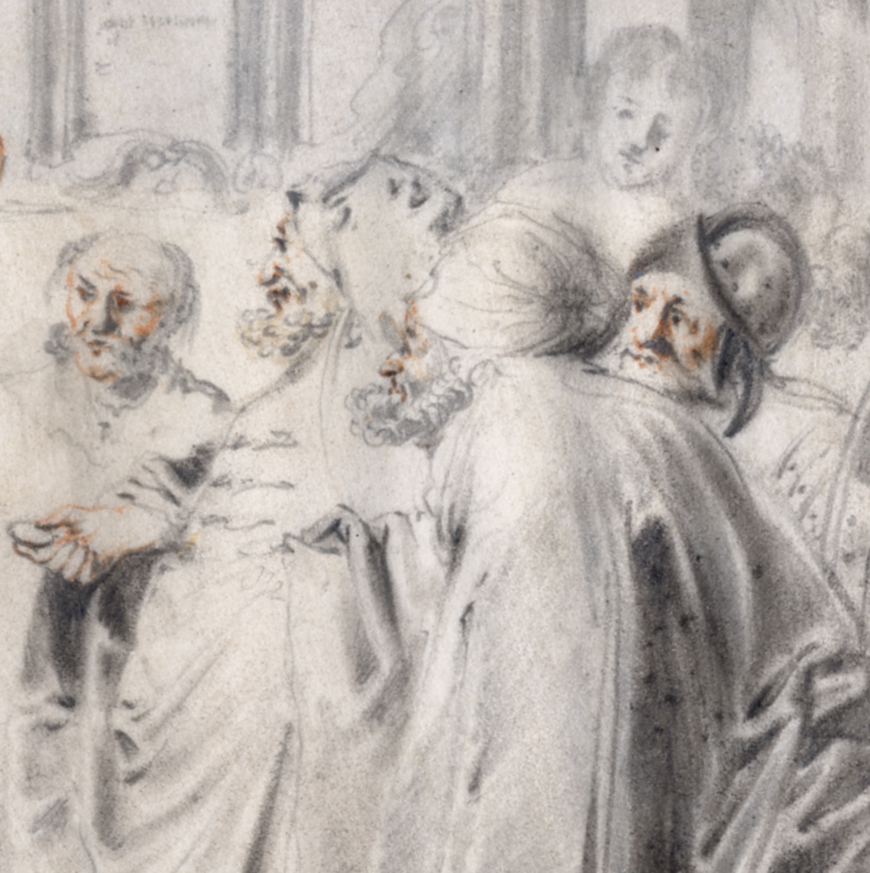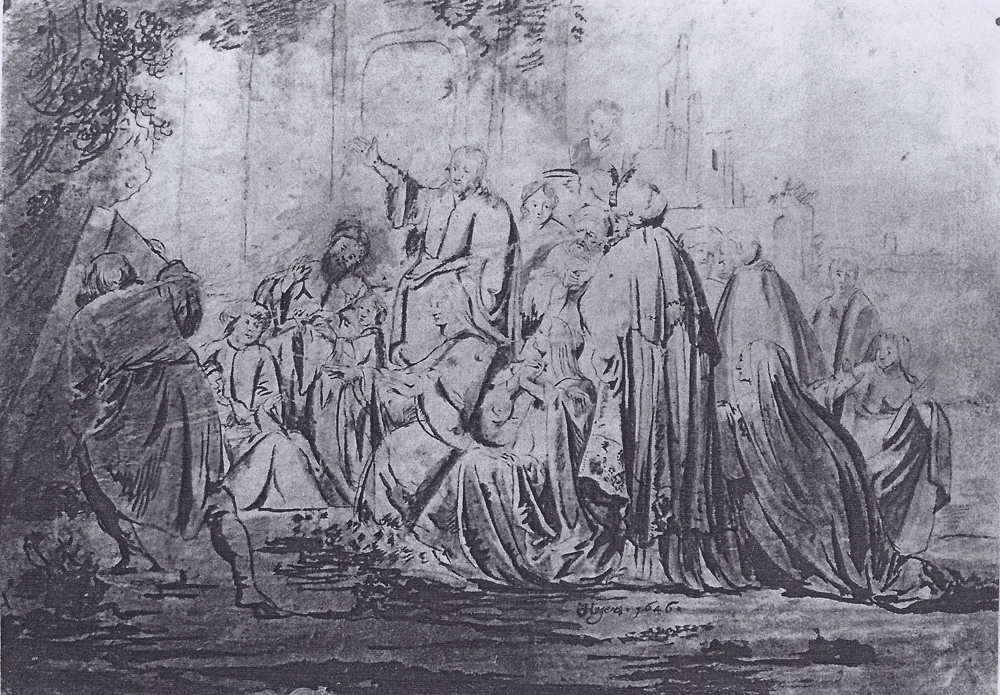JACOB HOGERS (Deventer 1614 – after 1652)
Jacob Hogers (Deventer 1614 – after 1652)
The Tribute Money
Black and red chalk, touches of pen and black ink, grey wash, on vellum, 145 x 195 mm (5.7 x 7.7 inch)
Provenance
Anonymous sale, Sotheby’s, Amsterdam, 15 November 1994, lot 78, repr. (as Pieter Quast)
***
When this sensitively drawn sheet was sold at Sotheby’s in 1994 it was still given to Pieter Quast, who also frequently worked on the expensive material vellum, much favored by collectors of drawings for its smooth surface and durability. It was correctly identified as a rare work by the Deventer-born artist Jacob Hogers around the time of the sale by Robert Schillemans.1
Hogers is an enigmatic artist by whom few works survive. He is not mentioned by early biographers such as Houbraken and Van Gool, and only came to scholarly attention in the late 19th century, when the Rijksmuseum acquired his masterpiece, Jacob and Esau.2 The main account of his life and works remains the article by B.J.A. Renckens published in 1955.3 Hogers was born into a patrician and learned Deventer family and seems to have studied in Haarlem, as his known oeuvre displays the influence of artists such as Pieter de Grebber (c.1600-1652/53) and especially Gerrit Bleker (c.1600-1656), while later paintings show an awareness of Rembrandt, with whose school he is sometimes associated. Hogers married in Amsterdam in 1641, and returned to Deventer shortly afterwards, where he specialised in the sophisticated genre of history painting, scenes from the Bible and Classical authors.
Our beautifully preserved sheet is typical of Hogers’s drawn oeuvre: all his known drawings are executed on vellum, in pen and wash in grey or black, and with accents in red on hands and faces, and take subjects from biblical history as their inspiration. About a dozen drawings are known, most in international museums. Our drawing may be compared to the Raising of Lazarus in the Rijksmuseum, Amsterdam (see last image).4 Hogers’s drawings must have been highly valued during his lifetime: the Deventer mayor Wilhelm Gelinck owned no less than six drawings on vellum by the artist.5
The subject is taken from the New Testament. The Pharisees ask Christ whether it is right to pay tax to the Romans. Christ, sensing the trap, asks whose likeness and name are on the coinage: 'They say unto him, Caesar's. Then he saith unto them, render therefore unto Caesar the things that are Caesar's; and unto God the things that are God's' (Matthew 22; Mark 12, Luke 20).
SOLD TO THE HISTORICAL MUSEUM, DEVENTER, THE NETHERLANDS
1. Note on the record sheet for the drawing preserved in the Rijksbureau voor Kunsthistorische Documentatie (RKD), The Hague.
2. Oil on canvas, 160 x 229 cm, signed and date 1655; inv. no. A1498; P.J.J. van Thiel, All the paintings of the Rijksmuseum in Amsterdam, Amsterdam 1976, p. 281, repr.
3. B.J.A. Renckens, ‘Jacob Hogers’, Oud Holland LXX (1955), pp. 51-66.
4. Vellum, 220 x 284 mm; signed and dated 1646; inv. no. RP-T-1922-36; see Renckens, p. 65, no. 17, repr.
5. Inventory of 12 July 1672; see Renckens, p. 65.



